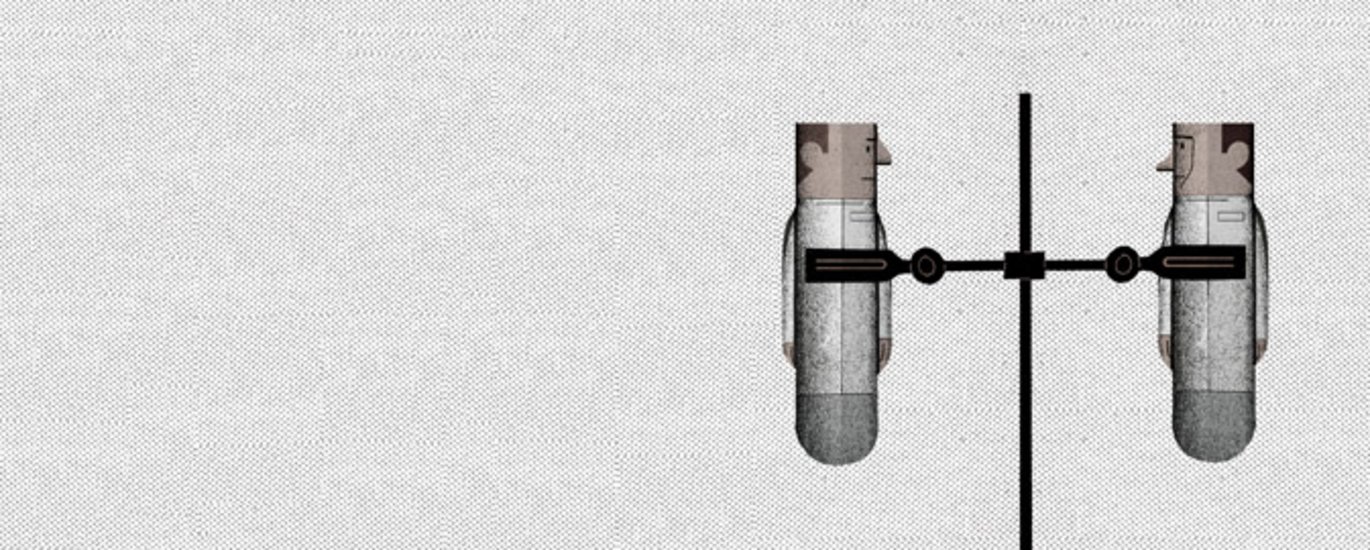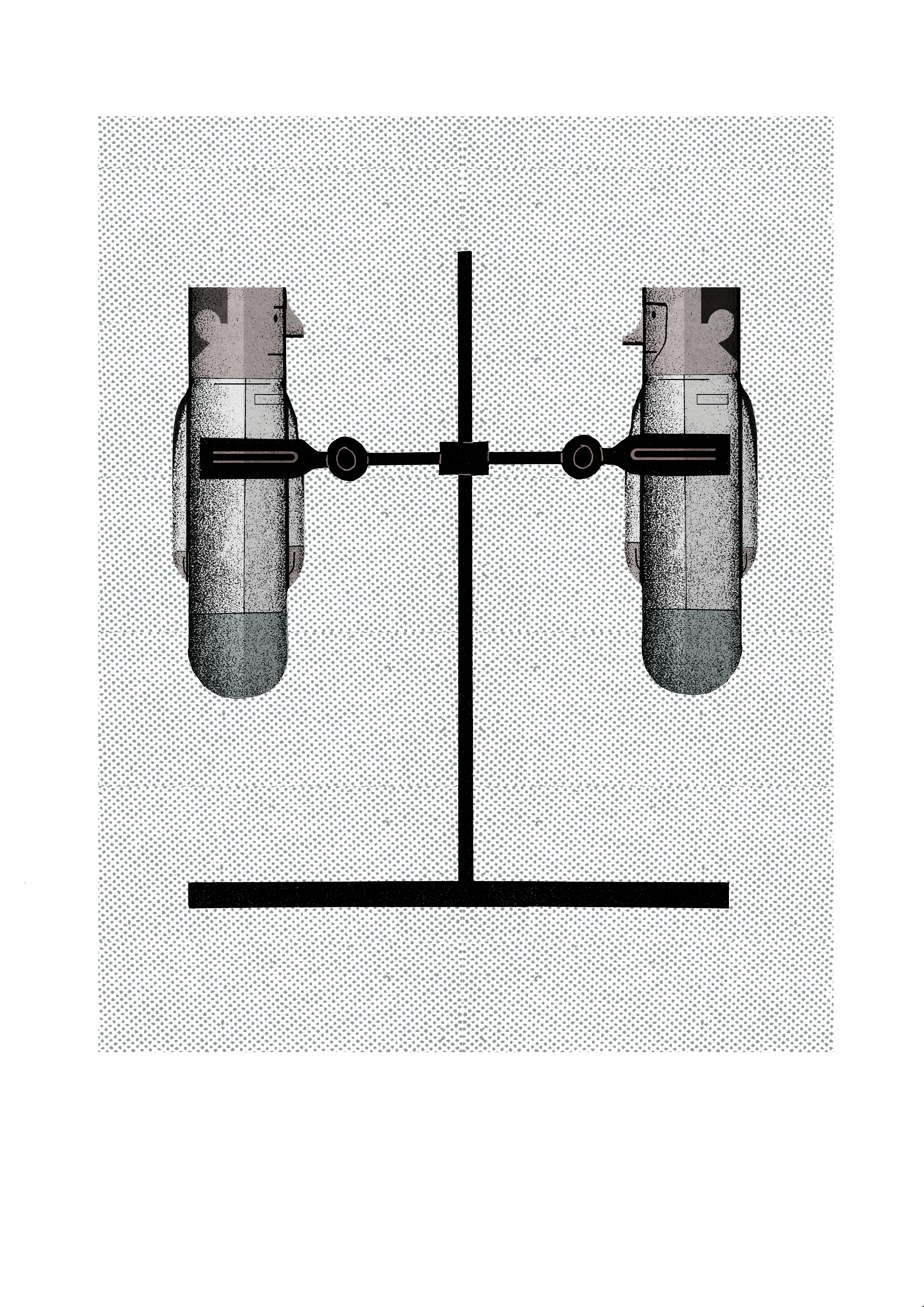Too different <br />for<br /> the same department?
Dean Brian Bech Nielsen has decided<br /> to divide the Department of Bioscience<br /> into two temporary units, <br />each with its own temporary head.


Omnibus has been informed that the catalyst for the decision was a request by researchers working at the department in Aarhus.
The precise duration of the temporary arrangement is still a little uncertain. But for the next year professor Hans Brix will be responsible for HR and finance for researchers from the classical university in Aarhus; and for the same period senior researcher Peter Henriksen will have the same responsibilities for researchers from the Danish Centre for Environment and Energy (the former DMU) in Silkeborg, Kalø and Roskilde.
But even though the dean has decided to divide the Department of Bioscience into two units in this way, his overall strategy is still unaltered in the long term: researchers from the two units will be merged again under a single head of department by the time the researchers from Kalø and Silkeborg move into the Aarhus campus as planned.
An arranged marriage?
Several different sources have informed Omnibus that the decision is a direct result of a request by researchers working at the Department of Bioscience in Aarhus. They told the dean that in their view the merger of researchers from two different cultures into a single department felt like an arranged marriage leading to a decline in working conditions and working environment over the past two years.
Major criticism from Aarhus
The plan of action that has been drawn up at the Department of Bioscience in Aarhus by way of follow-up on the psychological workplace assessment in 2012 reveals that there has been major criticism of the previous structure (a single big department with about 350 academic staff performing a variety of functions at four different geographical locations spread out across Denmark).
Under-represented in the management
This is how Hans Brix explains the reasons for the criticism expressed by the Aarhus researchers:
“I know that plenty of people on campus have felt under-represented in the management, feeling that they’ve been ignored in the decision-making process. It’s also been impossible to get any information about the administrative systems. For instance, we haven’t seen a single financial statement since September last year. And this is only one aspect of the criticism: the researchers have also made it clear that the workplace assessment revealed a lack of clarity in a number of areas that has created a lot of frustration. And this lack of clarity has been channelled into a wish for the creation of a simpler structure.”
Not just Aarhus
Peter Henriksen has the following comment:
“There’s no doubt that the psychological workplace assessment revealed a great deal of dissatisfaction in Aarhus. But there are also problems elsewhere, with lots of people feeling that they have lost their sense of identity following our integration into a single large department. I used to work in Roskilde, where we had two departments that were actually subdivided into smaller sections. It was these sections that the staff felt they belonged to on a daily basis. So I can quite understand that people feel a bit homeless in a single department like Bioscience, where there are 400-500 staff,” says Henriksen.
An extraordinary meeting
The union representatives at the four different units affected were informed of the division of the Department of Bioscience by Hans Brix and Peter Henriksen an extraordinary meeting of the local liaison committee.
In general, the union representatives agree that the dean has made the right decision – even though some of them seem to be happier about it than others.
The given circumstances
“I think it’s a good idea in the given circumstances,” says Ole H. Manscher, who is a member of the administrative staff and union representative for the academic staff in Roskilde.
“There’s no getting away from the fact that there are cultural differences between the two units, and that’s what my colleagues here in Roskilde tell me too,” he says.
A step backwards
“It’s as if we have to take a step backwards before going forwards. And there’s no doubt that this kind of thing adds to people’s sense of uncertainty because it’s a big change at a time when there are plenty of other changes going on as well. We’re looking forward to finding out how it all pans out in practice,” says Jens Bøgestrand, who is a member of the administrative staff and union representative for the academics in Silkeborg.
As a pragmatist, I think that…
Peter Wind, a member of the administrative staff and union representative for the academic staff in Kalø, has the following comment about the dean’s decision:
“As a pragmatist I think it’s the right thing to do if it solves the problems. And if you want to know what the problems are, I’m sure my colleagues at Bioscience Aarhus will be happy to fill you in.”
Disappointing results
Associate professor Erik Baatrup is the union representative for the academic staff in Aarhus. He says:
“We were merged into a single department with a view to creating closer collaboration between those of us who are researchers at a classical university and our government research colleagues. But what’s happened here in Aarhus is the exact opposite. The collaboration we enjoyed in the past, which led to some fantastic research results before the merger, has gone downhill.”
Joint liaison committee to continue
When the management and union representatives met at the extraordinary meeting of the local liaison committee, they discussed whether the committee should be divided into two just like the department. But they agreed to continue as a single committee.
Academic collaboration
Hans Brix and Peter Henriksen visited the four parts of the department immediately after being appointed at the end of May; and this is what they have to say about the tasks facing them in future:
Peter Henriksen:
“Our job is to find a way of encouraging the kind of good academic collaboration that the department already enjoys in many ways. We need to boost the partnerships that bind us so we can join forces once again and all pull together as a team. Workshops for all members of staff can be a good idea of course, but in my experience the thing that creates true integration is working together, because it’s by working together that you gain genuine understanding of your colleagues”.
Hans Brix:
“We need to make sure that the ditches that have been dug during this process are filled in again as soon as possible. We have to get back on track to ensure that by the time the researchers from Kalø and Silkeborg move into campus, we will have created a single united department with a joint financial structure and a single head of department.”
What does the dean think?
Dean Brian Bech Nielsen wants the framework for future collaboration between the two units to be finalised before he becomes rector in August.
His message to the new dual management team is clear:
“Hans Brix and Peter Henriksen have to make sure that their units work effectively, and that they work together. In fact they need to strengthen the collaboration between them. I have always underlined that the present structure is a temporary affair.”
A fixed course
Bech Nielsen also explains that the future course of the department will be finalised at a range of meetings to be held in the near future. He also expects that once the management duo have found their feet, they will be informing the staff of what the new course will mean for their daily working lives.
A clear goal
The dean also emphasises not least that the new leaders must involve their staff in the task of becoming a single Department of Bioscience once again.
This is because the current dean, who is soon to become the rector, believes that it is vital that nobody is left in any doubt that the goal is “completely unchanged”, as he puts it. He insists that there must be no wavering on this point.
No more doubt
“I’ll be discussing this issue with my successor, because there must be no more doubt regarding the final structure. And progress must also be made with regard to collaboration between the two units, because I believe we have the potential to become the strongest biology department in the whole of Europe.”
Different researchers do different things
What do researchers from classical universities do?
Erik Baatrup, associate professor,
Department of Bioscience, Aarhus:
"The main task of professors and associate professors from classical academic universities involves research and teaching. They carry out basic academic research based on their own choice of topic and method (they have research freedom), resulting in peer-reviewed articles and participation in national and international conferences. It is also an advantage if university researchers are able to communicate their knowledge in terms that society as a whole can understand.
Professors and associate professors teach at all levels of university, ranging from teaching young students who have just finished high school to supervising Master’s students while they write their theses and PhD students while they write their dissertations."
What do researchers from government research institutions do?
Jens Bøgestrand, member of administrative staff,
Department of Bioscience, Silkeborg:
"Government researchers support the political-administrative system by supplying top-quality expertise within the area concerned. Government researchers carry out applied research and provide consultancy services with a view to ensuring that (environmental) political decisions are made on the best possible knowledge base. Government researchers collaborate with the public (environmental) administration, and supply academic expertise in political processes.
The teaching carried out by government researchers focuses on the application of knowledge, and they also supervise students writing Master’s theses and PhD dissertations."

